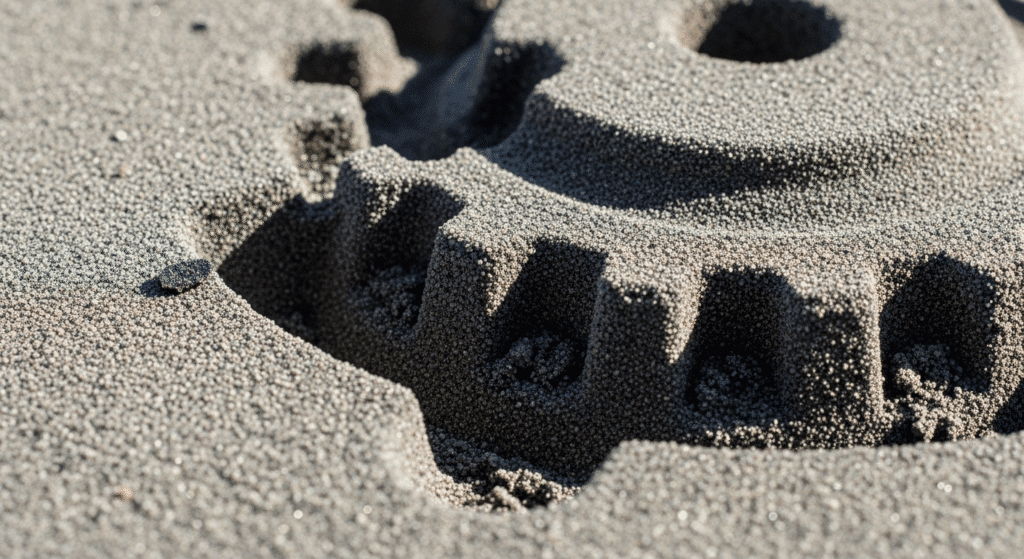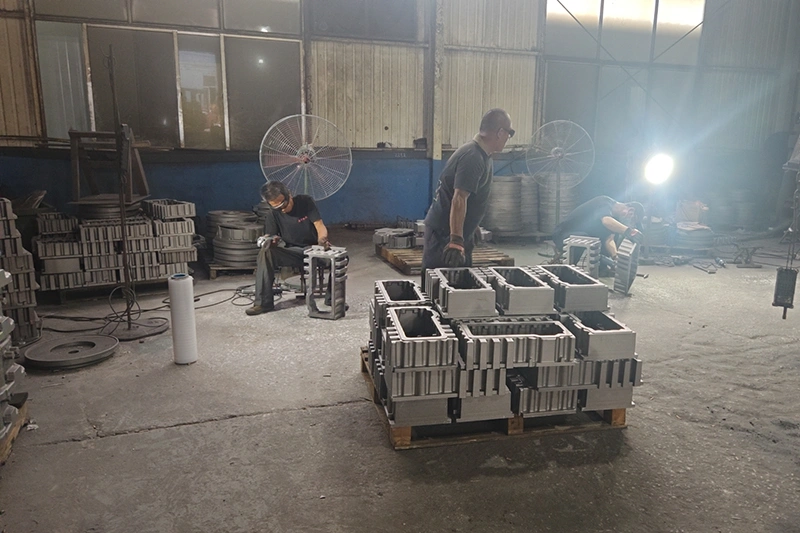Casting sand is the special mixture of sand and binding agents that metalworkers pack around patterns to create molds for pouring molten metal. When you pour liquid metal into these sand molds, it takes the exact shape of whatever object you’re trying to make – from engine blocks to decorative sculptures.
Think of it like building a sandcastle at the beach, except you’re creating a negative space where metal will go. The sand needs to be strong enough to hold its shape under extreme heat, yet porous enough to let gases escape as the metal cools.

Casting sand works by forming a heat-resistant cavity that shapes molten metal as it cools and solidifies. The process starts when you pack specially prepared sand around a pattern (a replica of your final part), then remove the pattern to leave behind a perfect hollow impression.
The magic happens at the molecular level. The binding agents in the sand create bridges between individual sand grains, giving the mold enough strength to withstand temperatures often exceeding 2,000°F.
As you pour the molten metal, the sand absorbs heat while maintaining its shape. Tiny gaps between sand grains allow steam and gases to escape, preventing defects like bubbles or cracks in your final casting.
The types of sand used in casting vary dramatically based on what you’re making, how precise it needs to be, and your production volume.
Green sand is the workhorse of the casting industry, made from silica sand mixed with water, clay (usually bentonite), and sometimes coal dust. Despite its name, it’s not actually green in color – “green” means it contains moisture and hasn’t been baked or chemically hardened.
This mixture creates a moldable consistency similar to damp beach sand. The clay acts like glue when wet, holding everything together while remaining flexible enough to pack tightly around complex shapes.
Resin-bonded sand uses chemical binders instead of clay and water to hold the sand grains together. You mix the sand with liquid resin and a catalyst, which triggers a chemical reaction that hardens the mixture into a solid mold.
The two main types are cold-box (hardens at room temperature) and hot-box (requires heat to cure). Cold-box systems cure in seconds when you blow a catalyst gas through them, while hot-box molds need temperatures around 450°F to set properly.
Shell sand creates thin, hollow molds by coating heated metal patterns with resin-coated sand. When the sand hits the hot pattern (typically 350-450°F), the resin melts and forms a hard shell about ¼ to ½ inch thick.
You build up the shell in layers, similar to how you might dip a candle multiple times to build up wax. Once cool, you remove the shell halves and glue them together to form your complete mold.
Sodium silicate sand, also called water glass casting, uses liquid sodium silicate as a binder that hardens when exposed to CO2 gas. You mix the sand with 3-6% sodium silicate solution, then blow carbon dioxide through it to trigger instant hardening.
The CO2 reacts with the sodium silicate to form a gel that binds the sand grains together. This process takes just 15-30 seconds, making it one of the fastest molding methods available.
Different industries choose specific sand types based on their unique requirements:
Yes, most casting sand can be reused multiple times, with green sand being the champion of recyclability – often reused 90-95% in well-managed foundries. After each use, you simply break up the old mold, remove any metal bits, and recondition the sand with fresh clay and water.

